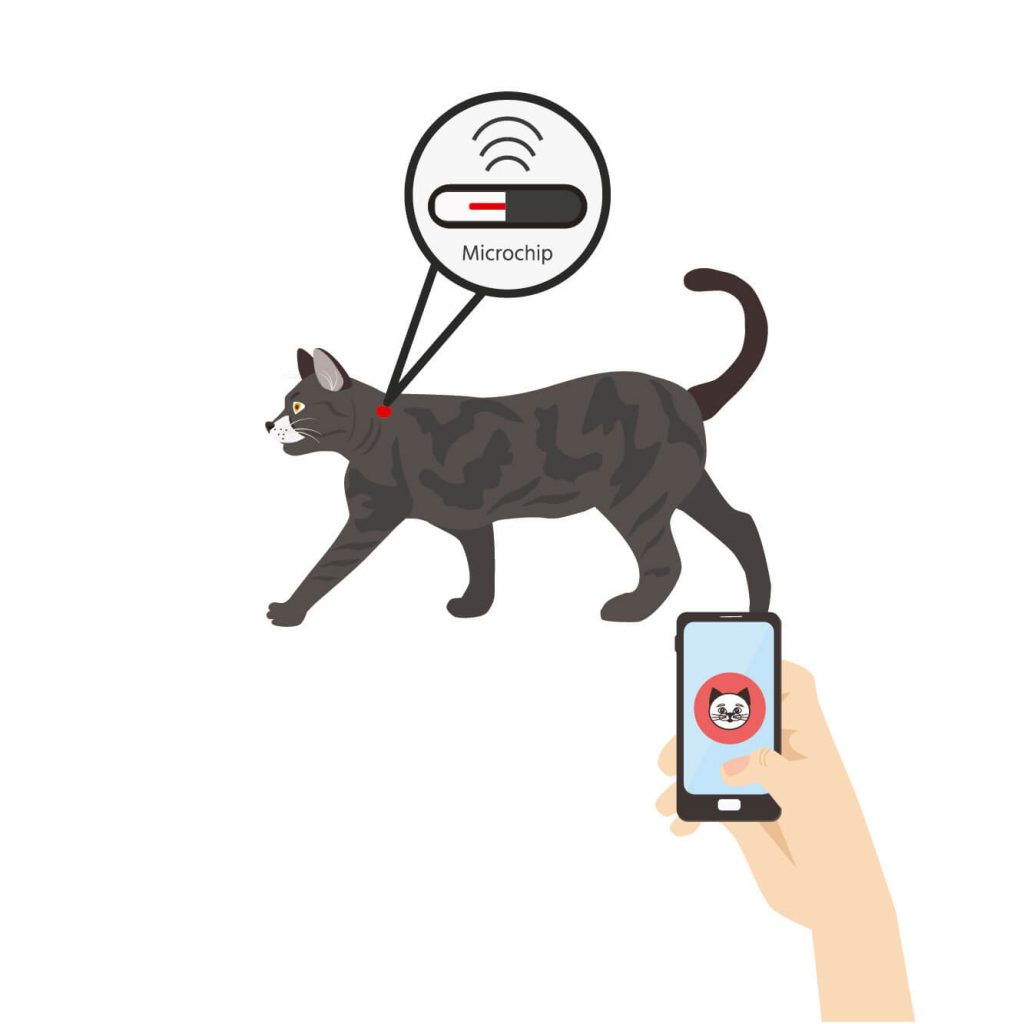This is all about getting your cat chipped.
Have you often thought about having your cat chipped?
Are you unsure whether it makes sense for you and your cat?
Everything you need to know about cat microchips – how the chip works, how and where it’s inserted, how it is read it and the advantages of cat chipping you can find out here!
Is a cat chip useful?
Does your cat always carry its identity card around with it? Not likely!
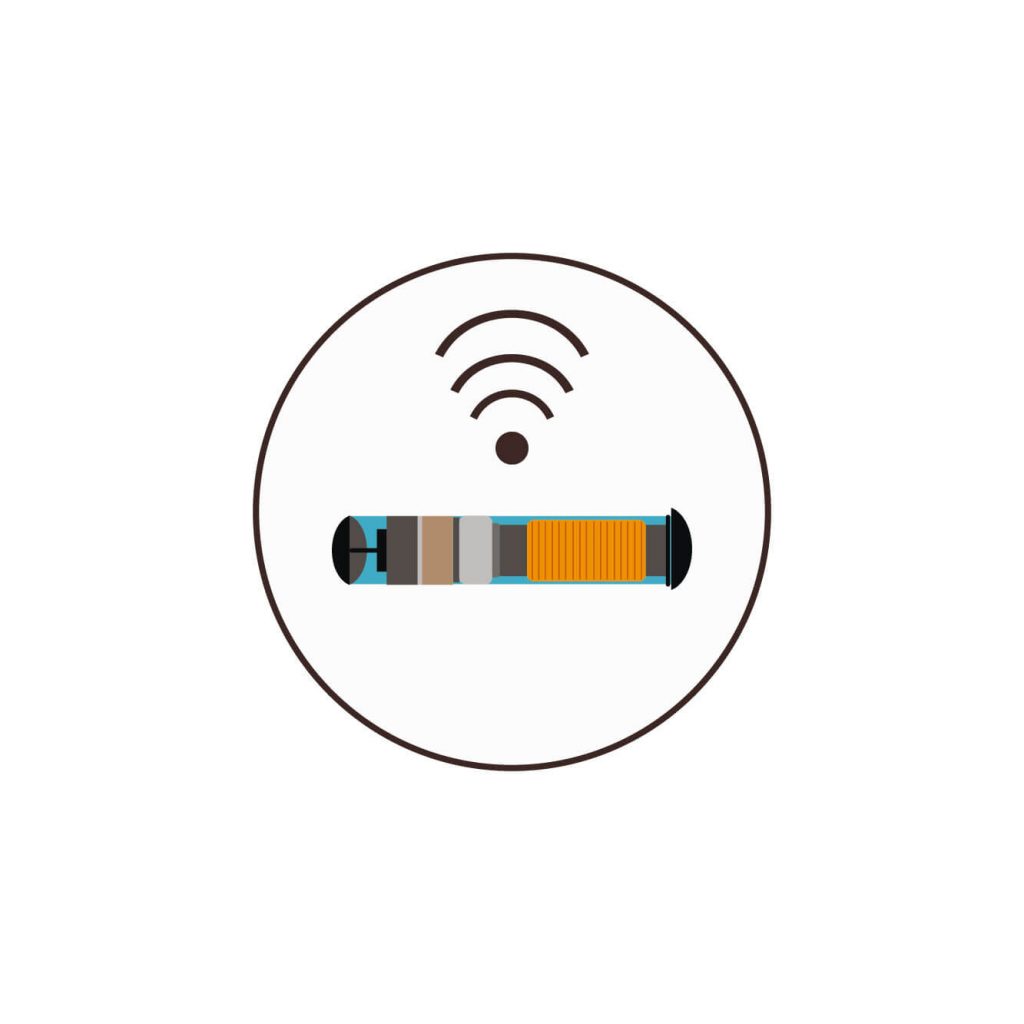
A cat chip is like a feline identity card: it indicates who owns the cat and its address. This is especially important if your cat has run away or can no longer find its way home.
So is a cat microchip only useful for outdoor cats? It’s also a good idea for indoor cats! While outdoor cats usually find their way home on their own, indoor cats are quickly overwhelmed by what they encounter outside.
How does a cat chip work?
A cat chip – a small microchip implanted in your cat by a vet – records where your cat belongs. If your cat gets lost and is found, the code on the chip (a 15-digit registration number) shows your stored data and the cat can be identified. It quickly becomes clear that the cat belongs to you!
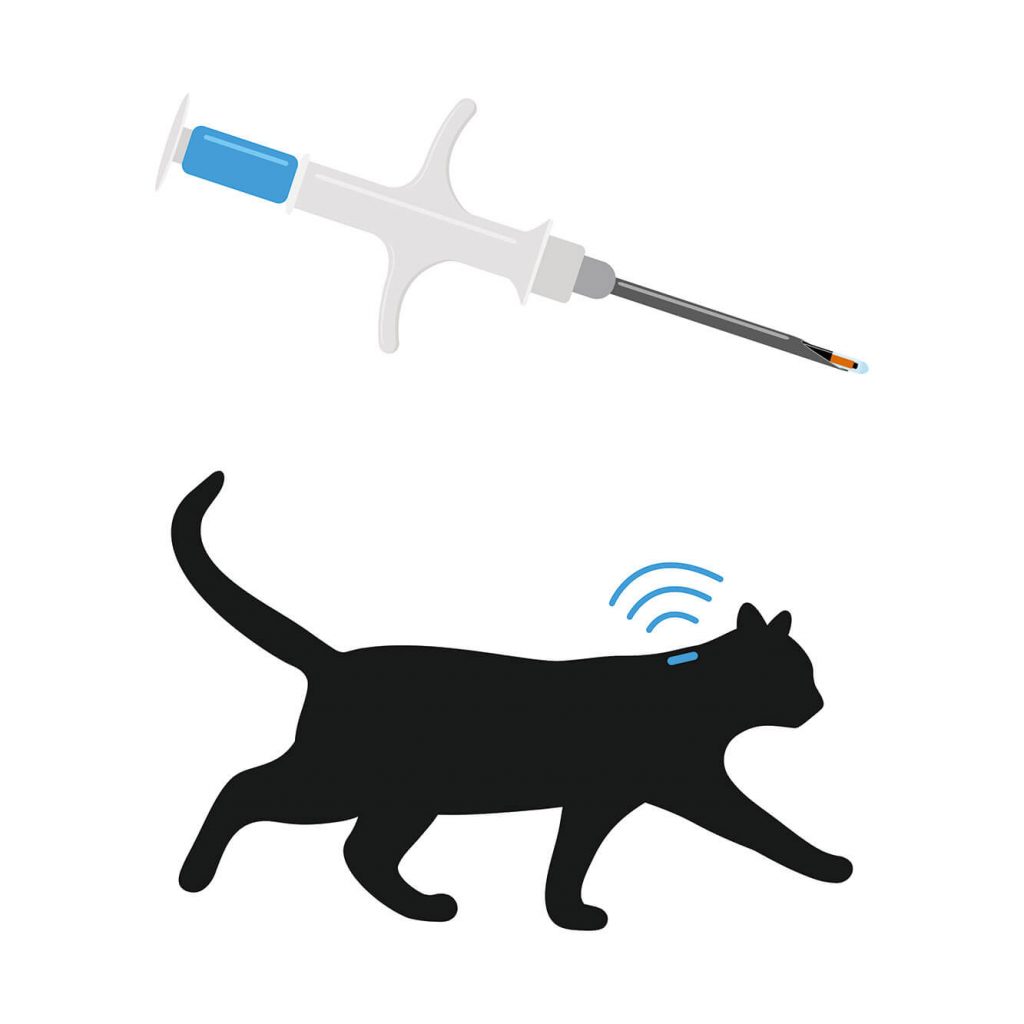
Cat collar, tattoo or chipping?
Es gibt verschiedene Möglichkeiten, Deiner Katze einen Samtpfoten-Ausweis mitzugeben, damit sie schnell identifiziert werden kann, falls Du sie vermisst.

You can put a cat collar on her, tattoo her on the ear or have her chipped. A tattoo on the ear is given to cats under anaesthetic, but can fade over time. A collar with an address tag is not safe – the cat can strangle itself with it.
Advantages of a cat microchip
As it has some advantages over collars and tattoos, many cats are routinely chipped. A cat microchip is virtually indestructible, does not need to be renewed or replaced; does not require electricity and becomes active only when a chip reader comes near. The cat chip is tiny, does not interfere with the cats’ movements and is made of material that is usually well tolerated by a cat’s body.
Important questions about chipping cats

Would you like to have your cat chipped, but still have some questions you’d like answered first? Here’s some basic information that may make your decision a little easier:
- Must you chip?
- Is it expensive?
- What are the costs of chipping?
- Is the procedure painful for my cat?
- At what age can cats be implanted with a chip?
How much does cat chipping cost?

If you have your cat chipped at the vet, you will incur costs of around 30 to 60 euros including the implantation fee. This can vary somewhat depending on the vet and the microchip. According to their fee scale, vets charge an average of 5.72 euros for implanting a microchip in a cat. Most of the overall cost is the microchip itself, depending on the model.
Is cat chipping mandatory?

If your cat travels abroad in Europe, it must be vaccinated, chipped and have its EU pet passport or a valid vaccination certificate. This has been the law since 2012, so it’s mandatory, otherwise your cat cannot enter the country concerned. In certain municipalities there are spay/neuter, identification and registration requirements for cats. Otherwise, you are not legally obliged to have your cat chipped.
Is chipping painful for a cat?

One small pinch for your peace of mind. Chipping is a very quick and relatively painless procedure. Your cat will hardly feel anything – it’s just a small pinprick with no more than a syringe! The implantation is done very quickly and without anaesthetic. The chip is simply placed in the connective tissue with a cannula. afterwards the vet checks it can be read and puts a sticker with the 15-digit code into your cat’s passport. Done!
At what age should a cat be chipped?

Cats can be chipped when they are first vaccinated, ie at 8 weeks. For adult cats, chipping is possible at any time. It’s a good idea to have the cat chipped when a visit to the vet (for vaccination, neutering, etc.) is due anyway. There’s no need to multiply the stress of vet visits. Cats are not often very enthusiastic to see the vet.
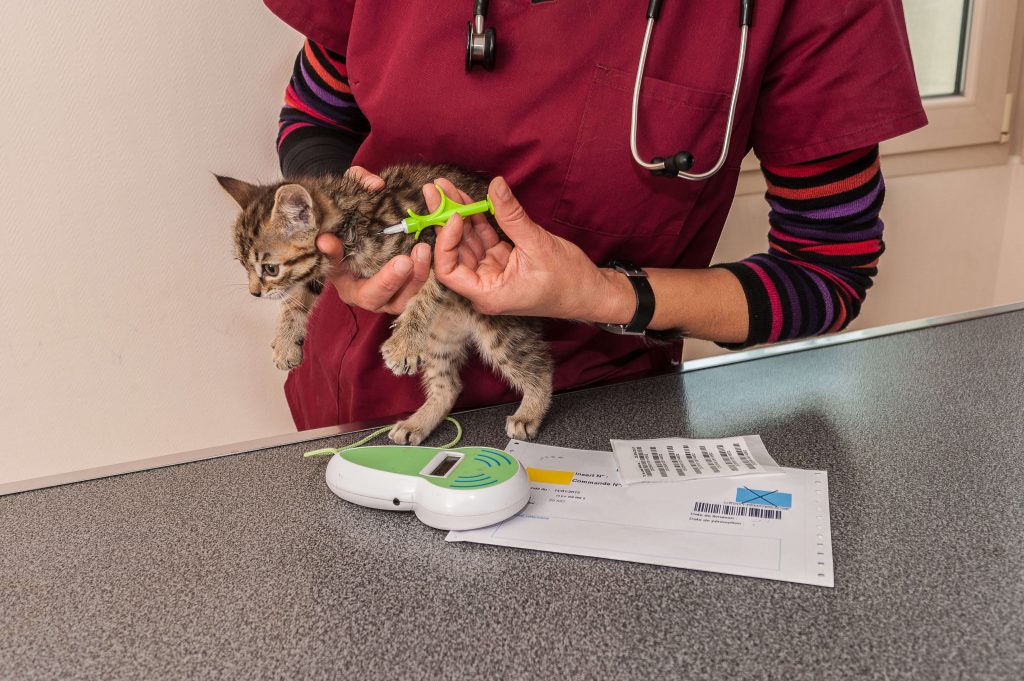
How the cat chip works
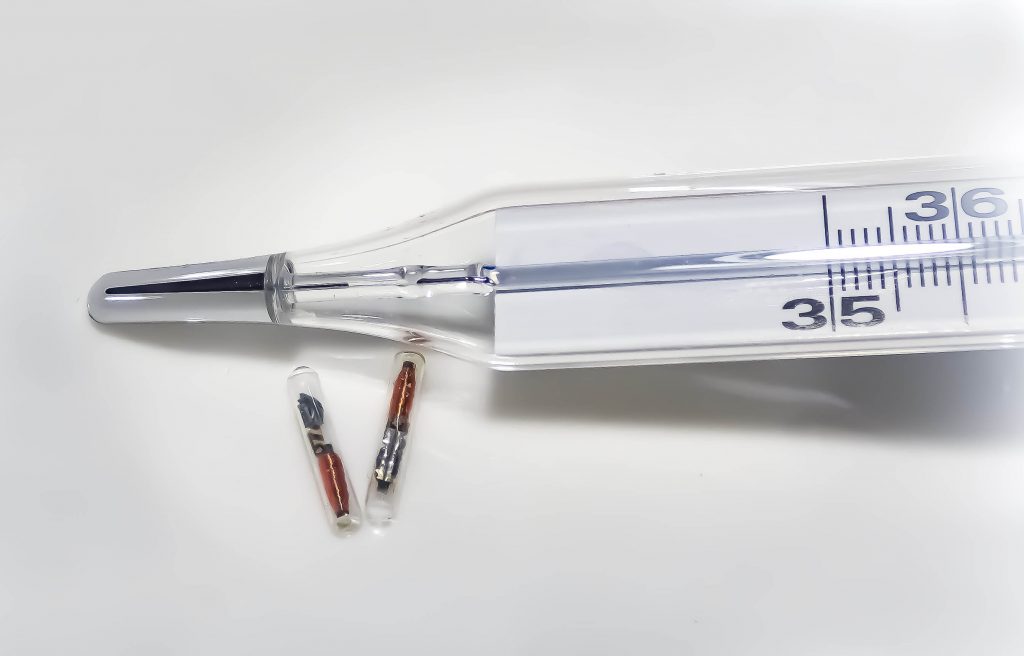
When you have your cat chipped, it usually gets an RFID chip. These are microchips that work with Radio Frequency Identification, a transmitter-receiver system. The “tags” or “transponders” in the cat communicate via electromagnetic waves with a reader that activates the chip when it is read and identifies the data and information.
Have your cat chipped at the vet
You should have your cat chipped by a vet and not do it yourself. Your cat needs to stay still and not squirm – without help it’s not easy to control a cat for long. They can quickly turn into slippery eels and wriggle out of every hold. A vet has the helping hands with his/her assistants and is familiar with the cat’s anatomy. That makes things simpler to put the chip in the right place!
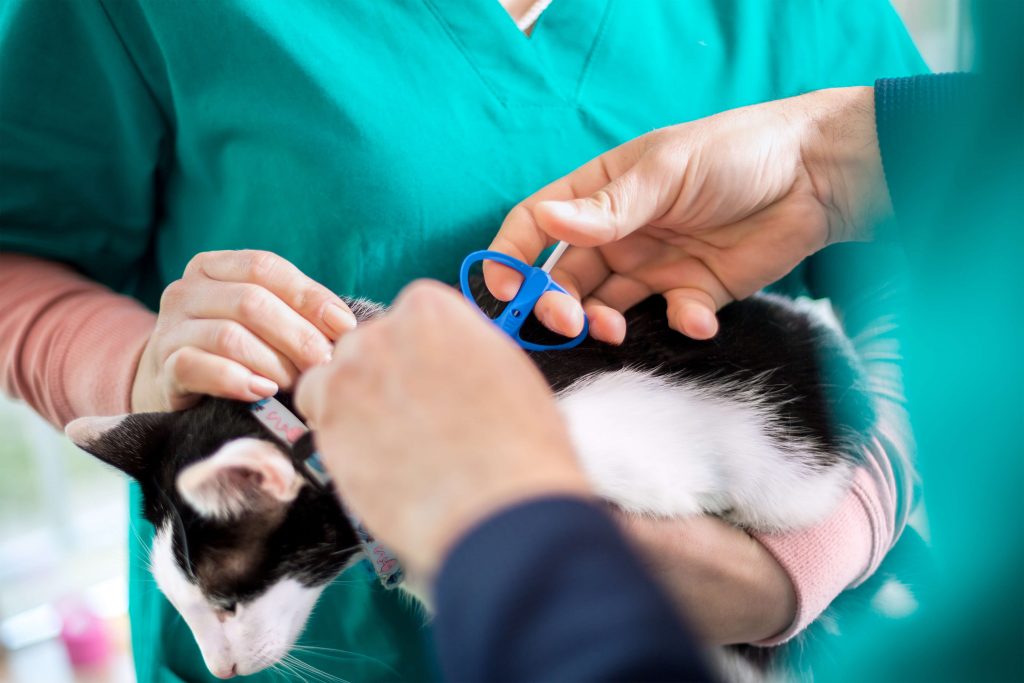
How the cat chip is inserted
A cat chip is inserted on the left side of the cat’s neck with a special injection syringe. The cannula of the tip contains the transponder. The chip is only a few millimetres in size and fits into the cannula. Once under the cat’s skin, it then settles in the shoulder area where it quickly grows into the cat’s connective tissue.
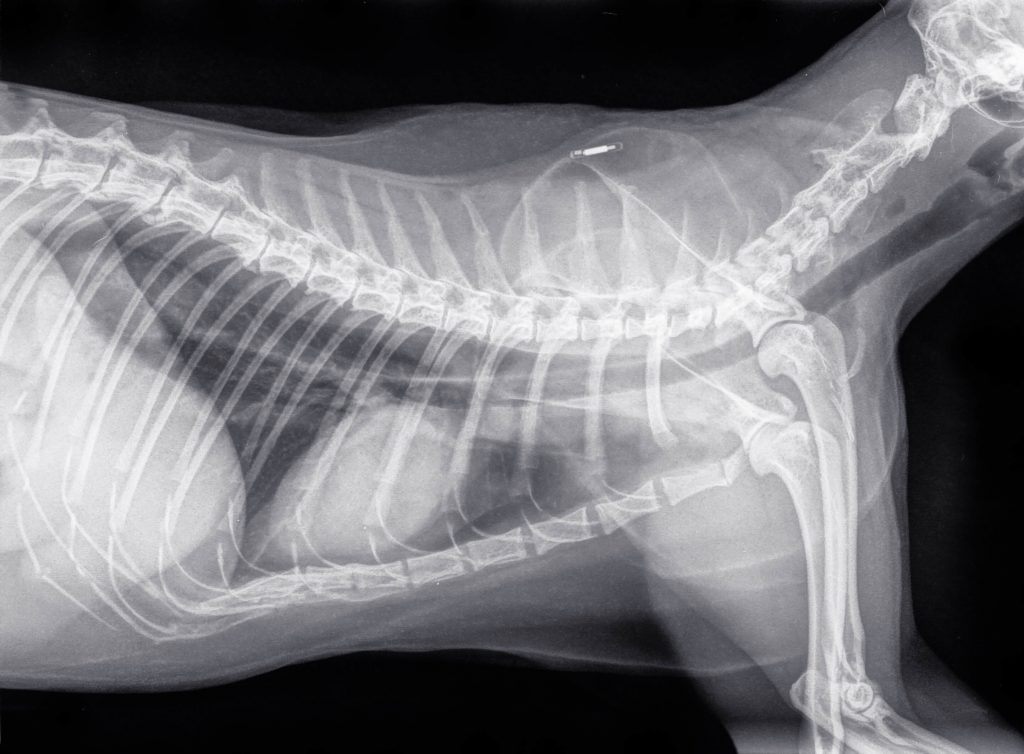
Registering the cat chip
Without registration a cat chip is useless. The vet puts a sticker with the 15-digit registration number on your cat’s pet passport or vaccination certificate. You should then register the cat with a pet registry yourself: either free or for a fee at “TASSO e.V.”, “FINDEFIX, the pet register of the German Animal Welfare Association or for a small annual fee at “IFTA” – the International Pet Registration Agency.
Reading a cat chip
When you have registered the 15-digit transponder number with an agency or association, you will receive a confirmation that the registration is complete. From then on, the cat’s chip can be read by a special reader close enough to the cat’s body. If your cat is found, you will be notified by the pet registry, an animal shelter or a veterinarian.
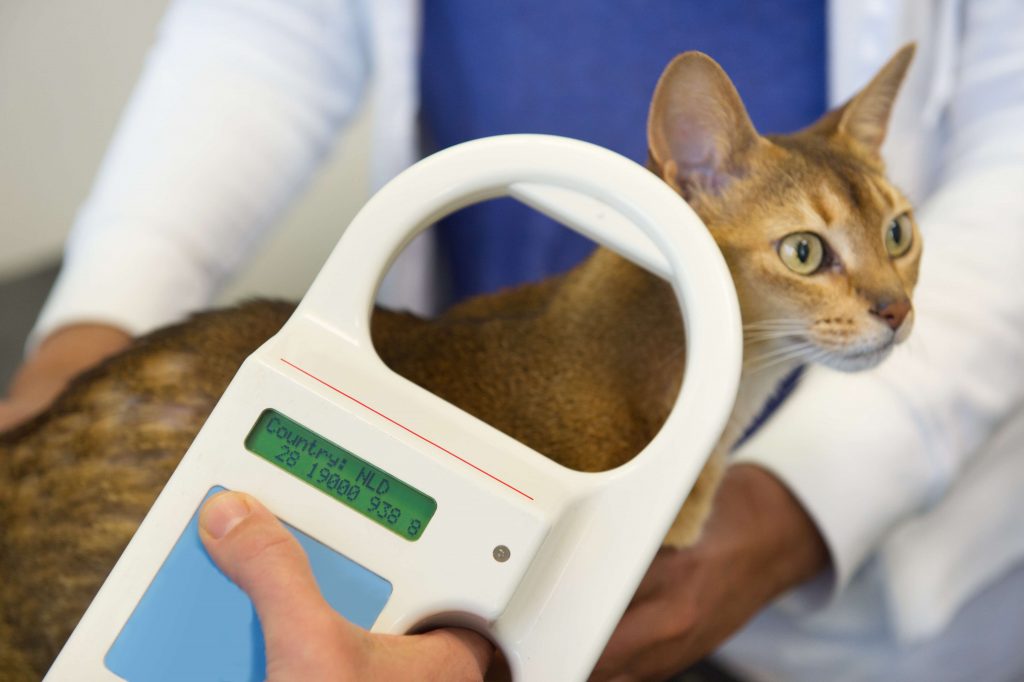
Tracking the cat chip
Can you locate your cat anytime and anywhere using the cat chip? No, unfortunately that’s not possible! The cat chip is only activated when a reader is close and can read it . A cat chip is not a “cat tracker” that continually monitors your kitty , giving you its GPS coordinates. If you have something like this in mind – Cat Big Brother – you should get a GPS tracker!
Cat chip reader apps
There are apps that can read cat microchips. The app connects your tablet or phone with an RFID reader. This works wirelessly via Bluetooth. Since 2019, “TASSO” also has a free “Tipp-Tapp” app in the app store that helps find missing animals quickly and return them to their owners.
Tip: A kind gesture: you can also use it to actively help other cat owners and their furry friends:
